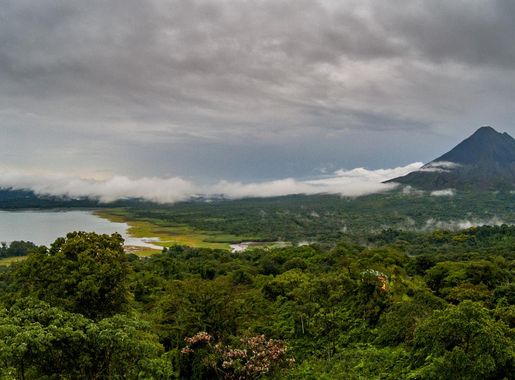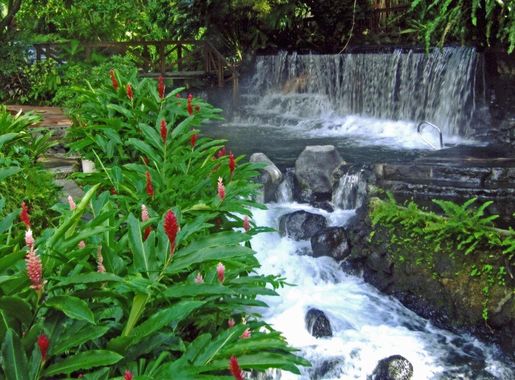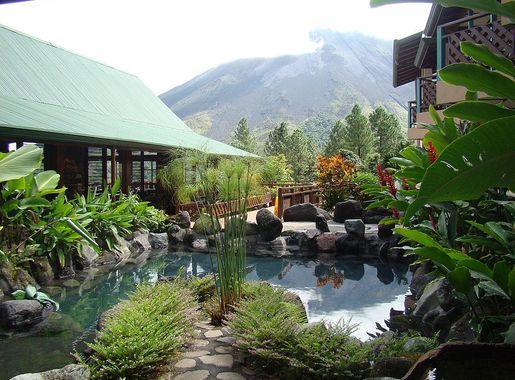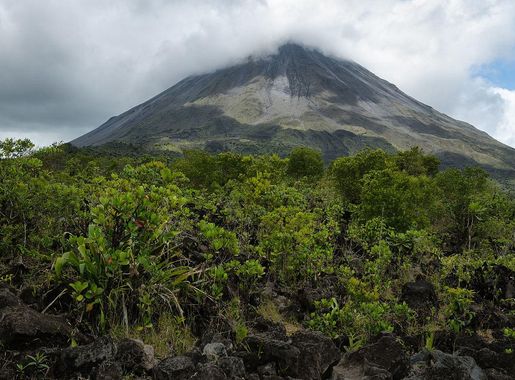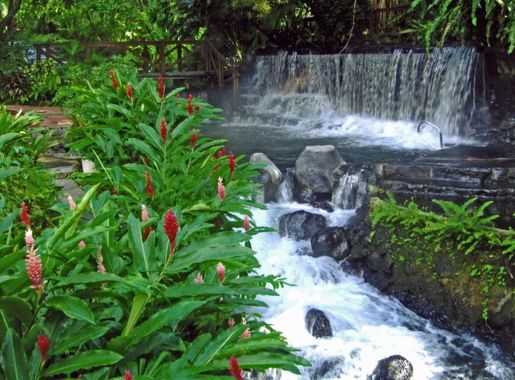
Arenal Volcano National Park: Nature's Fiery Masterpiece
Explore the wonders of Arenal Volcano National Park in Costa Rica, where lush jungles, diverse wildlife, and soothing hot springs await every traveler.
Arenal Volcano National Park in Costa Rica is a breathtaking destination where nature's raw power and beauty come together. The park is home to the majestic Arenal Volcano, which stands at 1,657 meters tall. Though it is currently in a resting phase, its perfect cone shape and past eruptions make it a fascinating sight for visitors. Surrounding the volcano, the park's lush forests and diverse wildlife create a paradise for nature lovers. You can hike through dense jungles, walk across hanging bridges, and discover exotic plants and animals. The park is also known for its natural hot springs, offering a relaxing way to soak in the volcanic landscape. The park covers an area of approximately 12,124 hectares and is part of the Arenal Huetar Norte Conservation Area. It features a variety of ecosystems, including rainforests, savannas, and cloud forests. This diversity makes it a haven for birdwatchers and wildlife enthusiasts. You might spot toucans, monkeys, and even jaguars. The park's trails cater to different levels of hikers, from easy walks to challenging treks. One of the most popular trails is the Lava Flow Trail, which takes you to the remnants of past volcanic activity and offers stunning views of the volcano and Lake Arenal. In addition to its natural beauty, Arenal Volcano National Park is rich in cultural history. Nearby towns like La Fortuna offer a glimpse into local life, with charming markets, traditional cuisine, and friendly locals. The park's visitor center provides information about the volcano's history and geology, enhancing your understanding of this unique landscape. Whether you're an adventurer, a nature lover, or someone looking to unwind, Arenal Volcano National Park promises an unforgettable experience.
Local tips in Arenal Volcano National Park
- Visit during the dry season (December to April) for the best weather and clearer views of the volcano.
- Wear sturdy hiking shoes, as the trails can be steep and rocky.
- Bring binoculars for birdwatching and spotting wildlife.
- Don't miss the natural hot springs for a relaxing end to your day.
- Stay in nearby La Fortuna for easy access to the park and additional activities.
Arenal Volcano National Park: Nature's Fiery Masterpiece
Arenal Volcano National Park in Costa Rica is a breathtaking destination where nature's raw power and beauty come together. The park is home to the majestic Arenal Volcano, which stands at 1,657 meters tall. Though it is currently in a resting phase, its perfect cone shape and past eruptions make it a fascinating sight for visitors. Surrounding the volcano, the park's lush forests and diverse wildlife create a paradise for nature lovers. You can hike through dense jungles, walk across hanging bridges, and discover exotic plants and animals. The park is also known for its natural hot springs, offering a relaxing way to soak in the volcanic landscape. The park covers an area of approximately 12,124 hectares and is part of the Arenal Huetar Norte Conservation Area. It features a variety of ecosystems, including rainforests, savannas, and cloud forests. This diversity makes it a haven for birdwatchers and wildlife enthusiasts. You might spot toucans, monkeys, and even jaguars. The park's trails cater to different levels of hikers, from easy walks to challenging treks. One of the most popular trails is the Lava Flow Trail, which takes you to the remnants of past volcanic activity and offers stunning views of the volcano and Lake Arenal. In addition to its natural beauty, Arenal Volcano National Park is rich in cultural history. Nearby towns like La Fortuna offer a glimpse into local life, with charming markets, traditional cuisine, and friendly locals. The park's visitor center provides information about the volcano's history and geology, enhancing your understanding of this unique landscape. Whether you're an adventurer, a nature lover, or someone looking to unwind, Arenal Volcano National Park promises an unforgettable experience.
When is the best time to go to Arenal Volcano National Park?
Iconic landmarks you can’t miss
Místico Arenal Hanging Bridges
Explore the breathtaking landscapes of Costa Rica at Místico Arenal Hanging Bridges, where nature and adventure await in a serene setting.
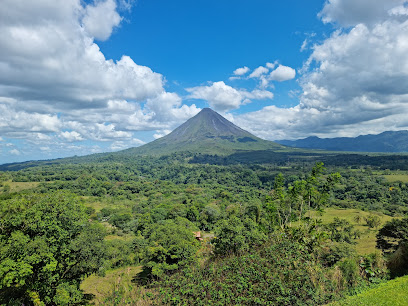
Fortuna Waterfall
Experience the breathtaking beauty of Fortuna Waterfall, a stunning natural wonder in La Fortuna, Costa Rica, perfect for adventure and relaxation.
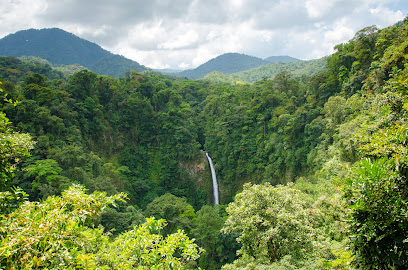
Parque Nacional Volcán Arenal
Explore the enchanting beauty of Parque Nacional Volcán Arenal, where adventure meets tranquility in Costa Rica's lush landscapes.

Parque de La Fortuna
Discover the tranquil beauty and diverse wildlife of Parque de La Fortuna, a stunning park in La Fortuna, Costa Rica, perfect for nature lovers and adventurers.
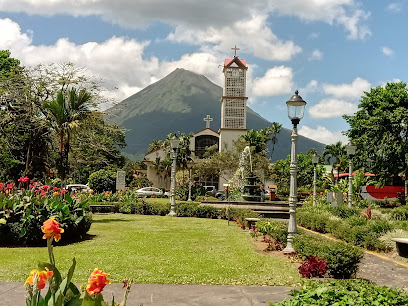
Kalambu Hot Springs
Experience the serene beauty and therapeutic waters of Kalambu Hot Springs, a top destination in La Fortuna, Costa Rica, for relaxation and adventure.
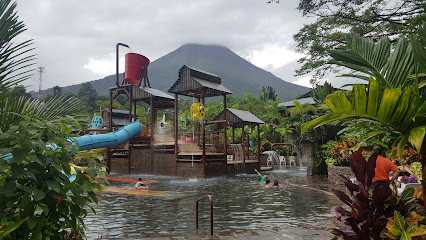
Sky Adventures
Experience the thrill of a lifetime at Sky Adventures in La Fortuna, where breathtaking views meet exhilarating activities in Costa Rica's lush landscapes.
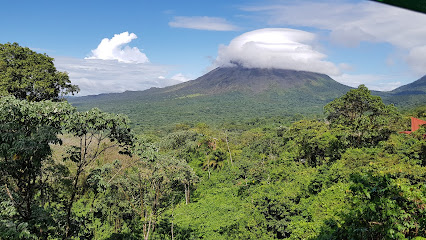
Arenal Observatory Lodge & Trails
Discover the stunning beauty of Arenal Volcano and immerse yourself in nature at Arenal Observatory Lodge & Trails, where adventure meets tranquility.
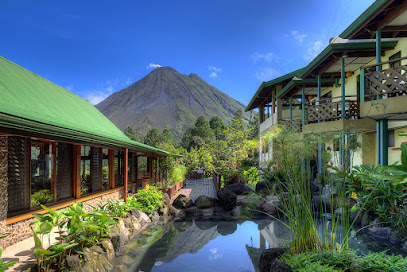
Bogarin Trail
Explore the enchanting Bogarin Trail, a birdwatcher's paradise offering breathtaking views and abundant wildlife in the heart of La Fortuna, Costa Rica.
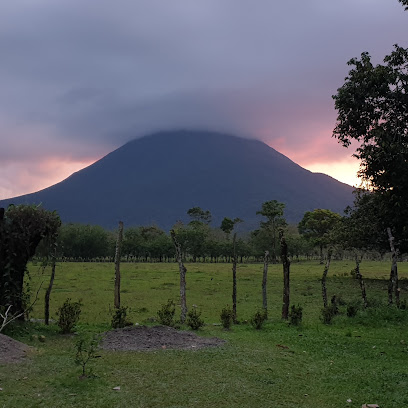
Arenal Volcano
Discover the stunning beauty and adventure opportunities at Arenal Volcano, a must-visit natural landmark in Costa Rica's breathtaking landscape.
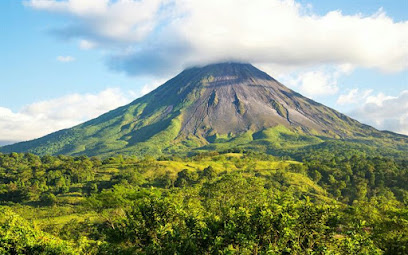
Sloth Watching Trail La Fortuna, Arenal Volcano Private Trail
Experience the breathtaking biodiversity and captivating wildlife of Costa Rica at the Sloth Watching Trail, a premier eco-tourist destination in La Fortuna.
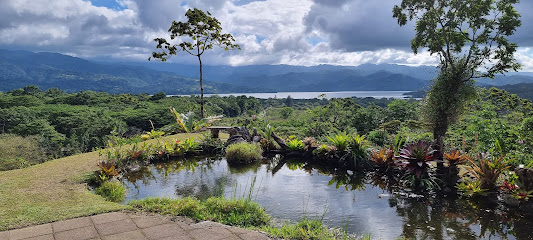
Arenal Volcano View and Lava Trails
Explore the breathtaking Arenal Volcano View and Lava Trails, where adventure meets nature in Costa Rica's stunning landscapes.

Parque Arenal Mundo Aventura
Experience the vibrant biodiversity and thrilling adventures at Parque Arenal Mundo Aventura in Costa Rica, where nature meets exhilaration.

Arenal Ecoglide Park
Discover the thrill of zip-lining and explore the vibrant rainforest at Arenal Ecoglide Park, an eco-adventure paradise in Costa Rica.
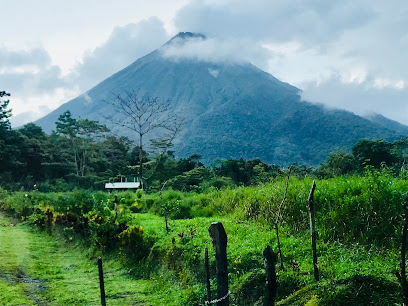
Butterfly Conservatory
Discover the enchanting world of butterflies at the Butterfly Conservatory in El Castillo-Arenal, a must-visit nature preserve for all ages.
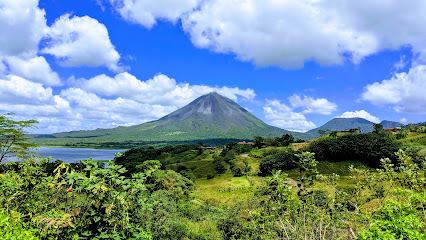
Arenal Volcano National Park Visitor Center
Discover the Arenal Volcano National Park Visitor Center, your gateway to adventure in Costa Rica's natural paradise.
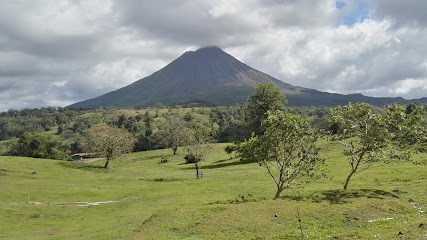
Unmissable attractions to see
Mundo de Perezosos - Sloth and Monkey Tour
Experience an unforgettable adventure with sloths and monkeys at Mundo de Perezosos in La Fortuna, Costa Rica. A must-visit for wildlife lovers!
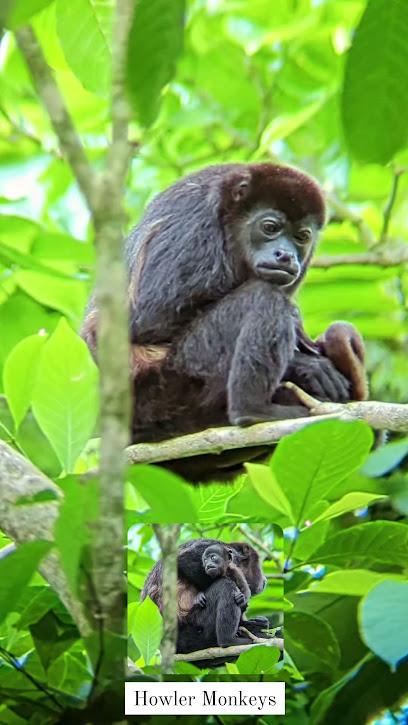
Rainforest Explorers CR
Explore the rich biodiversity and thrilling adventures at Rainforest Explorers CR in La Fortuna, Costa Rica, a paradise for nature lovers and adventure seekers.

Night walk Monteverde Finca Lantana
Explore the enchanting nocturnal life of Monteverde's cloud forests at Finca Lantana with immersive guided night walks.

John’s Nature Tours
Discover the breathtaking beauty of Monteverde with John's Nature Tours, your gateway to Costa Rica's stunning cloud forests and rich biodiversity.
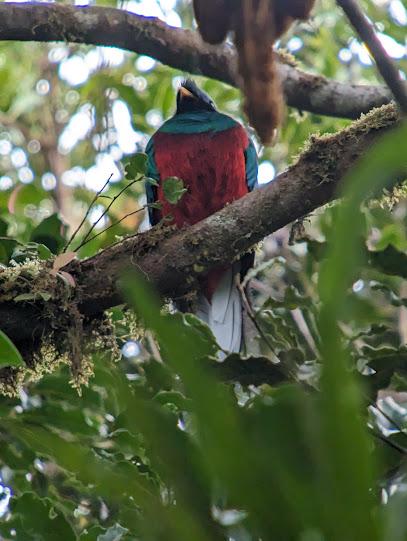
Frog Pond
Explore the enchanting Frog Pond in La Fortuna, a serene tropical oasis filled with vibrant wildlife and stunning natural beauty.
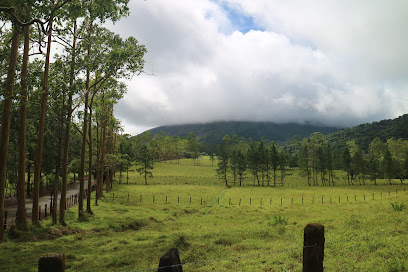
Essential places to dine
Don Rufino
Discover the exquisite flavors of Latin America at Don Rufino, La Fortuna's premier fine dining destination with locally sourced ingredients.
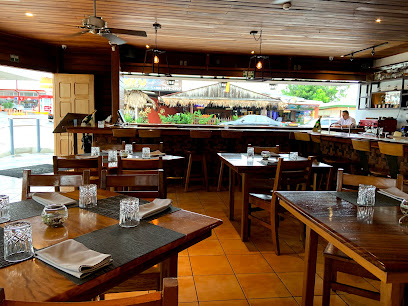
Que Rico Arenal Restaurante
Experience authentic Italian cuisine amidst breathtaking landscapes at Que Rico Arenal Restaurante in La Fortuna, Costa Rica.
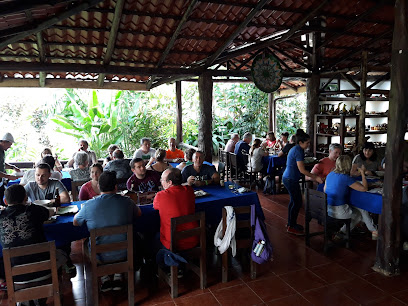
La Ventanita
Discover authentic Costa Rican flavors at La Ventanita in El Castillo - an affordable culinary delight amidst stunning natural beauty.
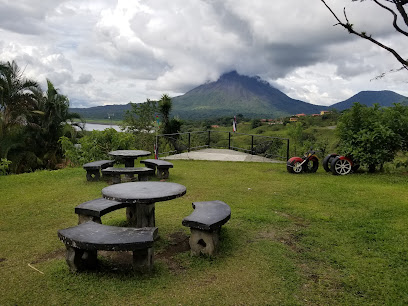
Mercadito Arenal
Discover the vibrant flavors of Mercadito Arenal in La Fortuna - where fresh ingredients meet authentic Costa Rican hospitality.
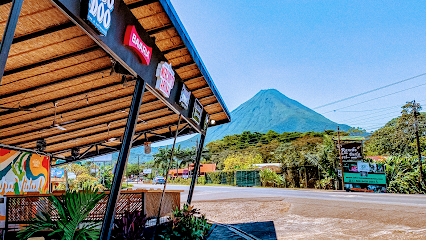
Restaurant Garra Pata
Discover authentic Costa Rican cuisine at Restaurant Garra Pata in La Fortuna, where delicious food meets vibrant atmosphere.
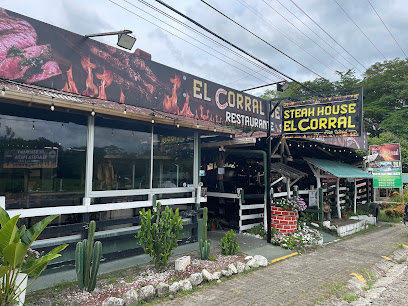
Restaurante bongos
Discover authentic Costa Rican flavors at Restaurante Bongos in La Fortuna - where every meal tells a story.
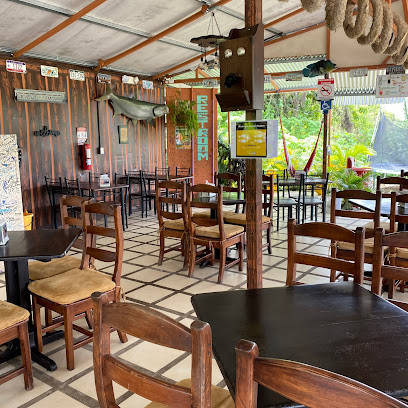
Restaurante El Novillo del Arenal
Experience the essence of Costa Rican cuisine at Restaurante El Novillo del Arenal in La Fortuna, where every bite tells a story.
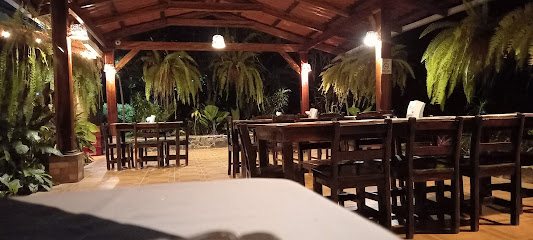
Ristorante La Forchetta
Experience authentic Italian cuisine at Ristorante La Forchetta in La Fortuna - where every meal is a celebration of flavor.
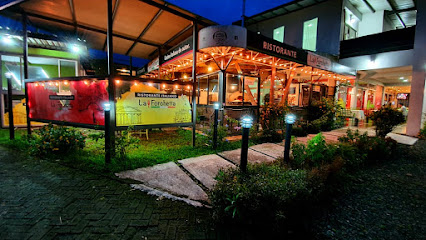
The Corner Restaurant
Experience the perfect blend of local flavors and international cuisine at The Corner Restaurant in La Fortuna.
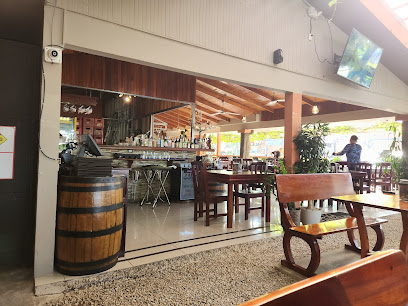
El Coloso Arenal
Discover authentic Costa Rican flavors at El Coloso Arenal in La Fortuna – where every dish is a celebration of local cuisine.
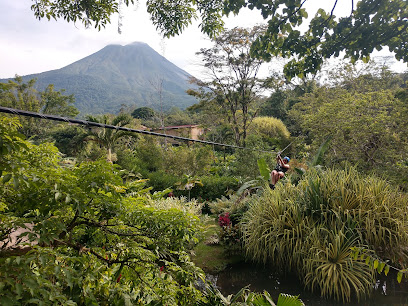
Fusion Arenal Mirador Restaurante, El Castillo Costa Rica.
Experience exquisite dining with breathtaking views at Fusion Arenal Mirador Restaurante in El Castillo, Costa Rica - where nature meets culinary art.
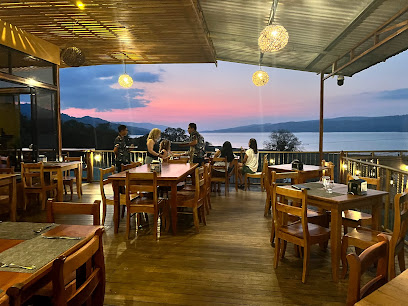
Yellow Bark
Experience authentic Costa Rican cuisine at Yellow Bark in La Fortuna - where flavor meets breathtaking scenery near Arenal Volcano.
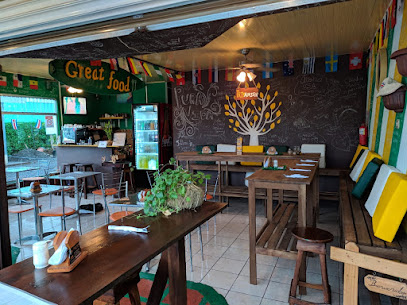
Mirador Arenal Steakhouse
Experience authentic Costa Rican cuisine at Mirador Arenal Steakhouse - where every meal is accompanied by breathtaking views.
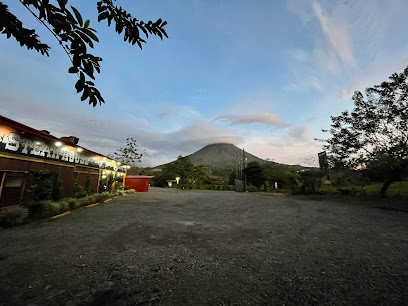
Cafetería y Restaurante Rain Forest Arenal
Discover authentic Costa Rican flavors at Cafetería y Restaurante Rain Forest Arenal amidst stunning rainforest scenery in La Fortuna.

Tucanes Restaurant
Discover authentic Costa Rican cuisine amidst stunning landscapes at Tucanes Restaurant in Nuevo Arenal.
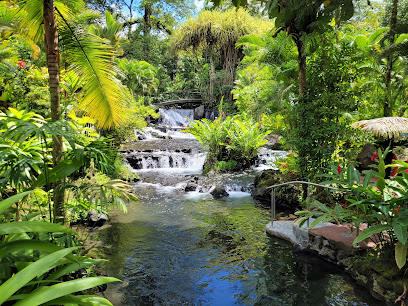
Markets, malls and hidden boutiques
Original Grand Gallery
Explore local artistry and vibrant souvenirs at the Original Grand Gallery in La Fortuna, a perfect blend of culture and creativity.
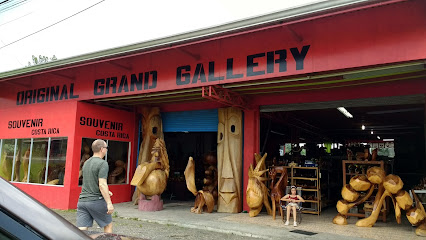
Everything Adventures
Discover the best outdoor gear and adventure planning at Everything Adventures in La Fortuna, Costa Rica - your ultimate hub for exploration.
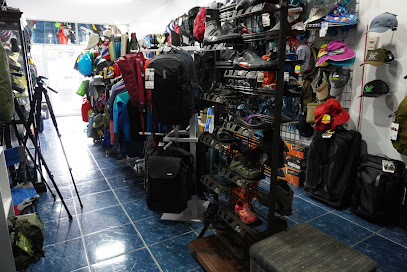
Neptune's House of Hammocks
Explore the essence of Costa Rican craftsmanship at Neptune's House of Hammocks—your go-to destination for unique, handcrafted hammocks in La Fortuna.
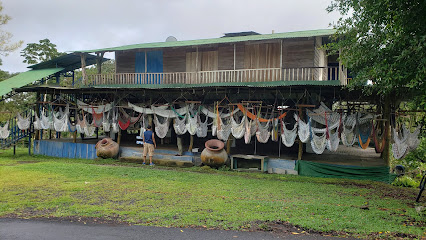
USA OUTLET
Discover unbeatable deals and a variety of products at USA OUTLET, La Fortuna's top destination for savvy shoppers seeking quality at a discount.
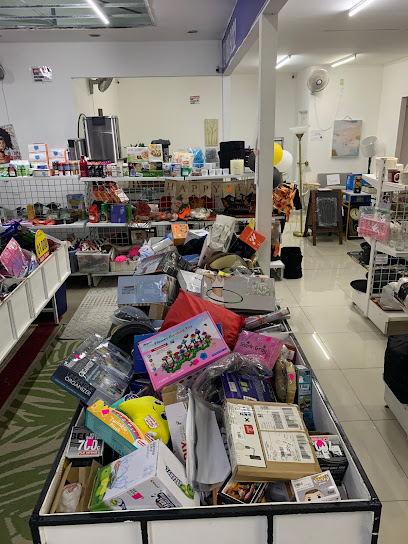
Britt Shop Tabacon
Explore Britt Shop Tabacon for exquisite gifts, local chocolates, and unique souvenirs in the captivating town of Fortuna, Costa Rica.
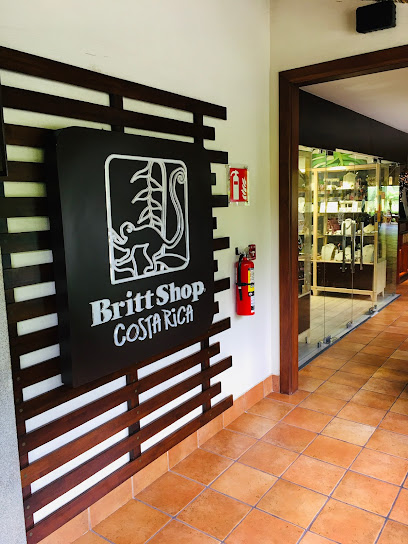
Biosfera Skincare (Experience Store)
Explore Biosfera Skincare in La Fortuna for eco-friendly beauty products made from local Costa Rican ingredients.
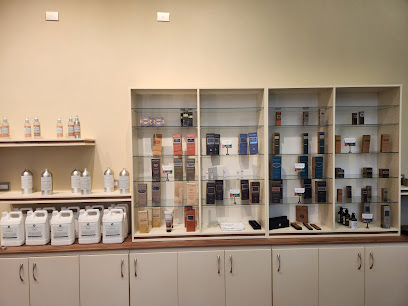
Lava Collective Travel Gifts shop
Explore the artistic handicrafts of Costa Rica at Lava Collective, a unique shop in La Fortuna offering locally crafted gifts and clothing.
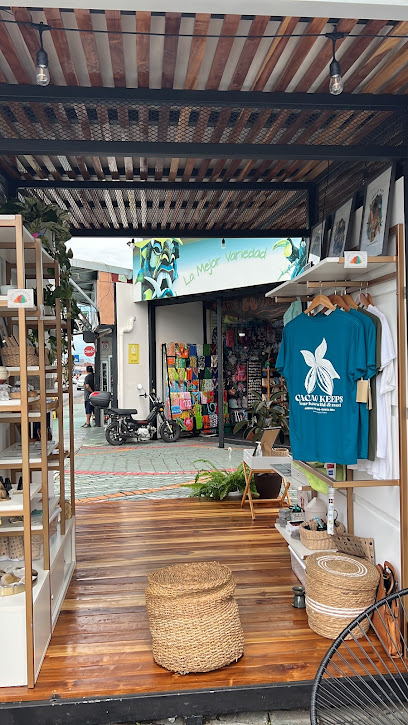
BamBamBoo - Eco Fashion & Gifts
Explore sustainable fashion and unique gifts at BamBamBoo - Eco Fashion & Gifts in La Fortuna, Costa Rica, where every purchase supports local artisans.
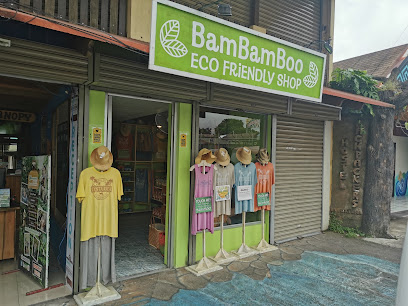
Liquidation Outlet La Fortuna
Experience the charm of La Fortuna's Liquidation Outlet, where unique bargains and local treasures await every traveler.

Britt Shop Baldi
Explore Britt Shop Baldi in La Fortuna for unique souvenirs, artisan chocolates, and a taste of Costa Rican culture.
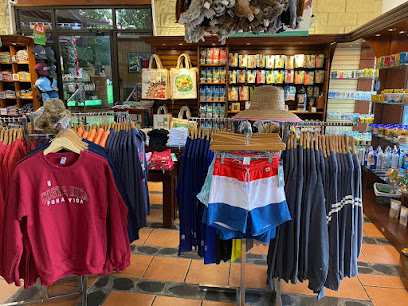
Beaü Shop Costa Rica
Explore Beaü Shop Costa Rica for exquisite jewelry and unique fashion accessories that embody the artistry of Costa Rica, located in La Fortuna.

Sarahlu boutique
Explore unique fashion at Sarahlu Boutique, a charming women's clothing store in La Fortuna, Costa Rica, reflecting the local culture and style.

Souvenirs Green Forest
Discover unique handcrafted souvenirs at Souvenirs Green Forest, the perfect place to find a piece of Costa Rica to cherish forever.
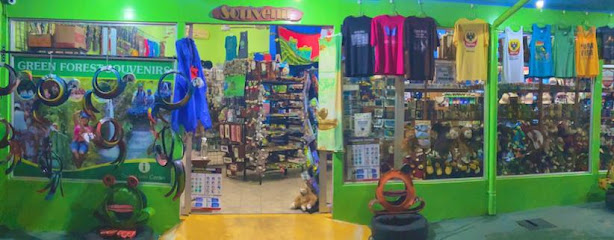
Britt Shop Sky Trek La Fortuna
Explore unique gifts, local crafts, and delicious chocolates at Britt Shop Sky Trek La Fortuna, the perfect souvenir stop in Costa Rica.
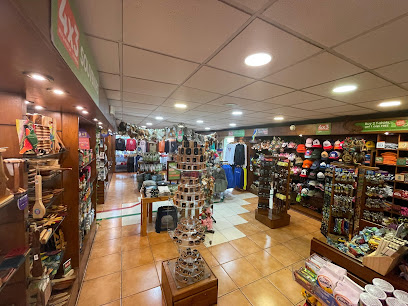
Suveni Lavas
Explore the vibrant culture of Costa Rica at Suveni Lavas, your go-to gift shop in La Fortuna for unique local crafts and souvenirs.
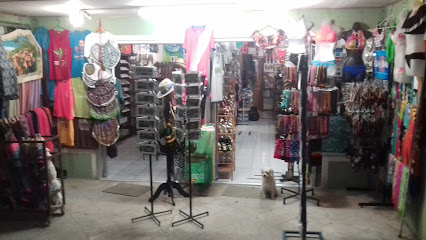
Essential bars & hidden hideouts
La Fortuna Pub
Experience the vibrant culture of La Fortuna at La Fortuna Pub, where local beers and delicious food come together in a lively atmosphere.
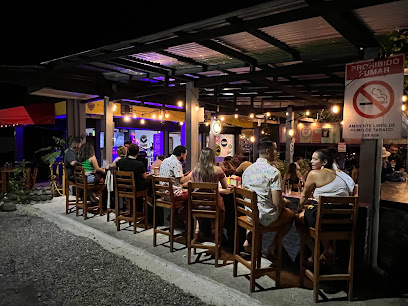
Mercadito Arenal
Discover the vibrant flavors of Costa Rica at Mercadito Arenal, where diverse cuisines and a lively atmosphere await your taste buds.
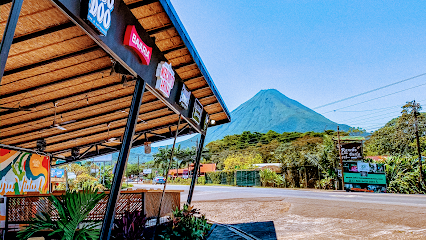
Howlers Bar & Grill
Experience the vibrant flavors and lively atmosphere at Howlers Bar & Grill in El Fosforo, Costa Rica's hidden culinary treasure.
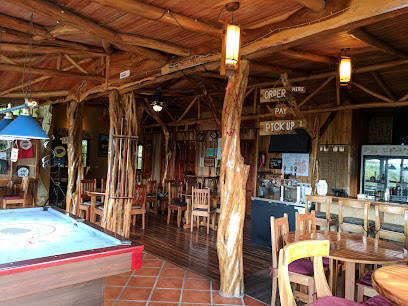
MAGIC SPORT BAR, Magic Mountain Hotel
Discover the energetic vibe of Magic Sport Bar at Magic Mountain Hotel, the perfect spot for drinks and socializing in La Fortuna's vibrant nightlife.
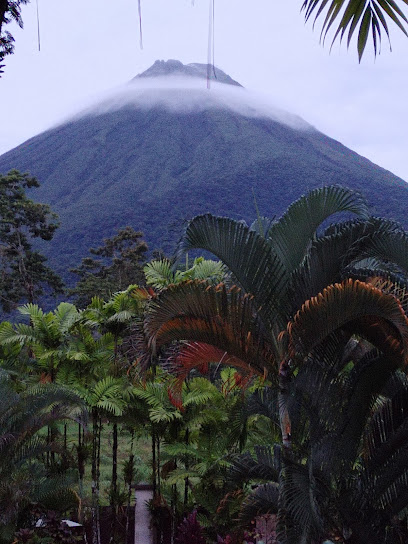
Cha
Experience La Fortuna's nightlife at Cha, a lively bar offering great drinks, entertainment, and a welcoming atmosphere for all.
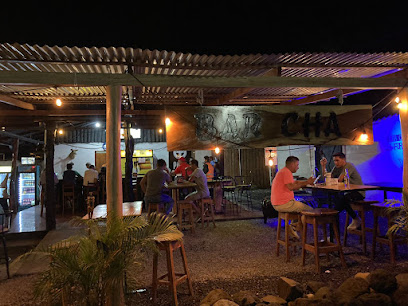
Sander’s Bar & Restaurante
Experience the vibrant flavors of Costa Rica at Sander's Bar & Restaurante in La Fortuna, where culinary delights meet a welcoming atmosphere.
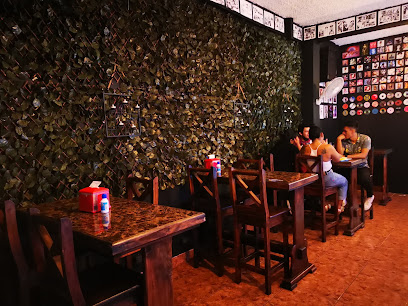
Balcón Arenal Restaurante y Sport Bar Lazy Twins
Experience the vibrant flavors and stunning views at Balcón Arenal Restaurante y Sport Bar Lazy Twins in La Fortuna, Costa Rica.

Voodoo Bar & Cocktails
Discover Voodoo Bar & Cocktails in La Fortuna, where innovative drinks and vibrant atmosphere come together for an unforgettable night.

Bar Patrón Costa Rica
Discover the vibrant nightlife at Bar Patrón Costa Rica, where innovative cocktails meet the lively spirit of La Fortuna.
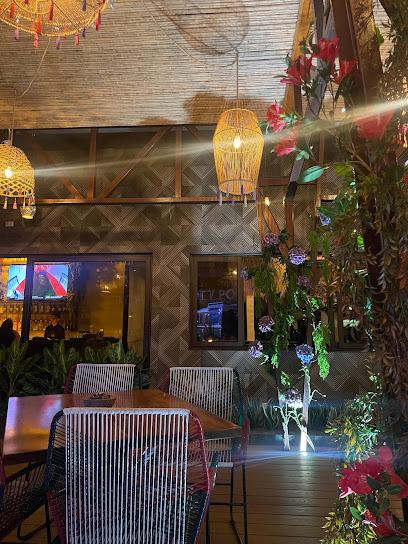
BEERLAND
Experience the vibrant craft beer culture at Beerland, La Fortuna's top brewpub with exceptional local brews and lively atmosphere.
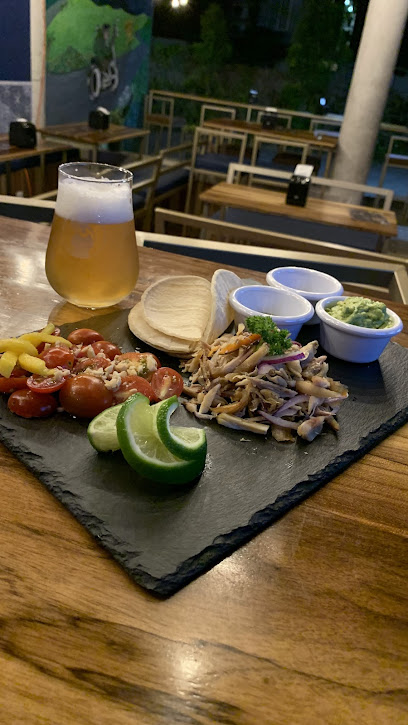
Bar Valentin's
Experience the vibrant nightlife of La Fortuna at Bar Valentin's, where tropical cocktails and local flavors create unforgettable moments.
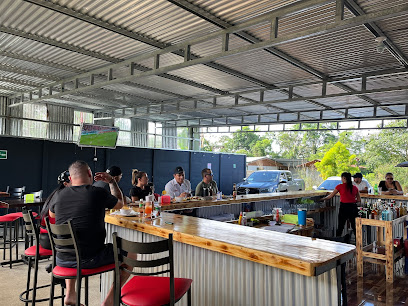
Tamarindo Chill
Discover the vibrant atmosphere of Tamarindo Chill, La Fortuna's go-to bar for refreshing drinks and a taste of local culture!
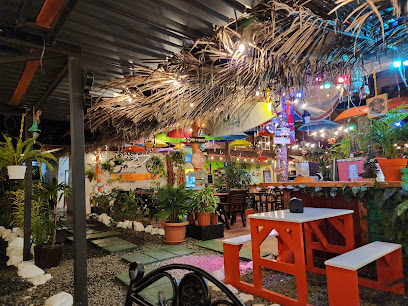
Nostalgia Wine Bar
Unwind at Nostalgia Wine Bar, where exquisite wines meet delightful tapas in a serene garden setting in Costa Rica.
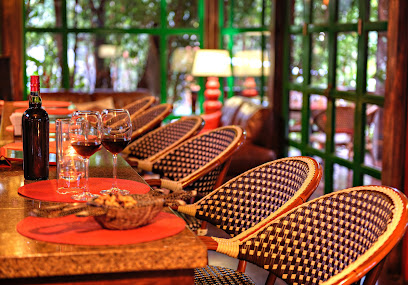
The Pool Bar & Restaurant
Experience the vibrant atmosphere and delectable cuisine at The Pool Bar & Restaurant in La Fortuna, Costa Rica - a must-visit for every traveler.
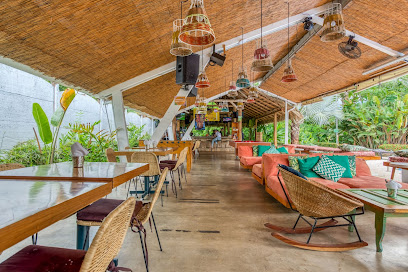
Shangri La Gardens. Tabacon Resort Club área
Discover tranquility and natural beauty at Shangri La Gardens in Alajuela Province, a perfect retreat for relaxation and refreshment amidst lush gardens.
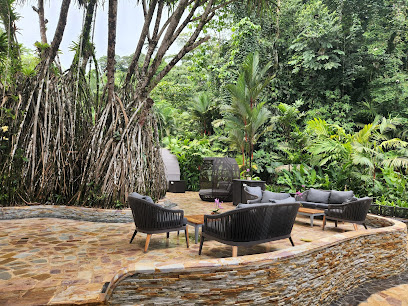
Local Phrases about Arenal Volcano National Park
-
- HelloHola
[oh-lah] - GoodbyeAdiós
[ah-dyohs] - YesSí
[see] - NoNo
[noh] - Please/You're welcomePor favor/De nada
[por fah-vohr/de nah-dah] - Thank youGracias
[grah-syahs] - Excuse me/SorryDisculpe/Lo siento
[dee-skool-pe/loh syen-toh] - How are you?¿Cómo estás?
[koh-moh ehs-tahs] - Fine. And you?Bien. ¿Y tú?
[byen. ee too] - Do you speak English?¿Hablas inglés?
[ah-blahs een-glehs] - I don't understandNo entiendo
[noh ehn-tyen-doh]
- HelloHola
-
- I'd like to see the menu, pleaseMe gustaría ver el menú, por favor
[meh goos-tah-ree-ah behr ehl meh-noo, por fah-vohr] - I don't eat meatNo como carne
[noh koh-moh kahr-neh] - Cheers!¡Salud!
[sah-loohd] - I would like to pay, pleaseMe gustaría pagar, por favor
[meh goos-tah-ree-ah pah-gahr, por fah-vohr]
- I'd like to see the menu, pleaseMe gustaría ver el menú, por favor
-
- Help!¡Ayuda!
[ah-yoo-dah] - Go away!¡Vete!
[veh-teh] - Call the Police!¡Llama a la policía!
[yah-mah ah lah poh-lee-syah] - Call a doctor!¡Llama a un doctor!
[yah-mah ah oon dohk-tohr] - I'm lostEstoy perdido/a
[ehs-toy pehr-dee-doh/dah] - I'm illEstoy enfermo/a
[ehs-toy ehn-fehr-moh/dah]
- Help!¡Ayuda!
-
- I'd like to buy...Me gustaría comprar...
[meh goos-tah-ree-ah kohm-prahr...] - I'm just lookingSólo estoy mirando
[soh-loh ehs-toy mee-rahn-doh] - How much is it?¿Cuánto cuesta?
[kwan-toh kwehs-tah] - That's too expensiveEso es demasiado caro
[eh-soh ehs deh-mah-syah-doh kah-roh] - Can you lower the price?¿Puedes bajar el precio?
[pweh-dehs bah-har ehl pree-syoh]
- I'd like to buy...Me gustaría comprar...
-
- What time is it?¿Qué hora es?
[keh oh-rah ehs] - It's one o'clockEs la una
[ehs lah oo-nah] - Half past (10)Las diez y media
[lahs dyehs ee meh-dee-ah] - MorningMañana
[mah-nyah-nah] - AfternoonTarde
[tahr-deh] - EveningNoche
[noh-cheh] - YesterdayAyer
[ah-yehr] - TodayHoy
[oy] - TomorrowMañana
[mah-nyah-nah] - 1Uno
[oo-noh] - 2Dos
[dohs] - 3Tres
[trehs] - 4Cuatro
[kwah-troh] - 5Cinco
[seen-koh] - 6Seis
[sehs] - 7Siete
[syeh-teh] - 8Ocho
[oh-choh] - 9Nueve
[nweh-veh] - 10Diez
[dyehs]
- What time is it?¿Qué hora es?
-
- Where's a/the...?¿Dónde está un/el...?
[dohn-deh ehs-tah oon/ehl] - What's the address?¿Cuál es la dirección?
[kwal ehs lah dee-rehk-syon] - Can you show me (on the map)?¿Puedes mostrarme (en el mapa)?
[pweh-dehs mohs-trahr-meh (ehn ehl mah-pah)] - When's the next (bus)?¿Cuándo es el próximo (autobús)?
[kwan-doh ehs ehl proh-ksee-moh (ow-toh-boos)] - A ticket (to ....)Un boleto (a ....)
[oon boh-leh-toh (ah)]
- Where's a/the...?¿Dónde está un/el...?
History of Arenal Volcano National Park
-
Long before the arrival of Spanish explorers, the area surrounding Arenal Volcano was inhabited by indigenous tribes such as the Maleku. These tribes had a deep spiritual connection with the land and volcano, which they considered a powerful and sacred entity. Archaeological evidence, including pottery and stone tools, points to their presence and way of life in the region.
-
During the 16th century, Spanish explorers arrived in Costa Rica, bringing significant changes to the region. The indigenous communities were greatly affected by the colonization process, which included forced labor and the spread of diseases. The Spanish influence is still visible today in the architecture and cultural practices of nearby towns.
-
The Arenal Volcano remained largely unnoticed by the wider world until the late 19th century. It was during this period that European explorers and naturalists began documenting the volcano. The name 'Arenal' is derived from the Spanish word for 'sandy place,' referring to the volcanic ash and sand found in the area.
-
One of the most significant events in the history of Arenal Volcano was the eruption on July 29, 1968. The eruption was unexpected and devastating, destroying the towns of Tabacón and Pueblo Nuevo. It resulted in the deaths of 87 people and radically altered the landscape. This event marked the beginning of a new eruptive period that lasted until 2010.
-
In 1991, the Costa Rican government established Arenal Volcano National Park to protect the unique volcanic landscape and its diverse ecosystems. The park covers an area of approximately 29,692 acres and is part of the Arenal Tilaran Conservation Area. It has become a major destination for eco-tourism and scientific research.
-
Since the late 20th century, Arenal Volcano National Park has become a hub for ecotourism, attracting visitors from around the world. The park offers a range of activities such as hiking, bird watching, and hot springs. This influx of tourism has contributed to the local economy and increased awareness of conservation efforts.
-
The presence of Arenal Volcano and the national park has significantly shaped the culture and lifestyle of surrounding communities. Traditional agricultural practices have shifted to accommodate tourism-related activities. Local artisans produce crafts and souvenirs that reflect the area's natural beauty and volcanic heritage.
Arenal Volcano National Park Essentials
-
Arenal Volcano National Park is located in the northern region of Costa Rica, near the town of La Fortuna. The nearest international airport is Juan Santamaría International Airport (SJO) in San José, approximately 120 kilometers away. From San José, you can take a shuttle, private transfer, or rent a car to reach La Fortuna, which typically takes around 3 to 4 hours by road. Domestic flights are also available from San José to the nearby Arenal Airport, reducing travel time.
-
Within Arenal Volcano National Park and La Fortuna, there are several transportation options. Local taxis and shuttle services are readily available for traveling between attractions. Renting a car provides flexibility to explore the surrounding areas at your own pace. Additionally, guided tours often include transportation. Public buses operate between major towns and cities, but they may not be as frequent or convenient as other options.
-
The official currency in Costa Rica is the Costa Rican Colón (CRC). US dollars are widely accepted in tourist areas, including La Fortuna and Arenal Volcano National Park. Credit cards are also commonly used in hotels, restaurants, and shops. ATMs are available in La Fortuna for withdrawing cash. It is advisable to carry some cash for smaller establishments and tips.
-
Arenal Volcano National Park and La Fortuna are generally safe for tourists. However, standard precautions should be taken. Avoid walking alone at night in secluded areas and keep an eye on your belongings in crowded places. Petty theft can occur, so use hotel safes for valuables. While La Fortuna is relatively safe, be cautious in less populated areas outside the main tourist zones.
-
In case of emergency, dial 911 for immediate assistance. La Fortuna has a local police station and medical facilities, including clinics and pharmacies. For more serious medical emergencies, you may need to travel to a larger hospital in San José. It's recommended to have travel insurance that covers medical emergencies and adventure activities.
-
Fashion: Do wear comfortable and breathable clothing suitable for outdoor activities. Don't wear overly revealing clothing, especially in rural areas. Religion: Do respect local customs and religious practices. Avoid disrupting any local ceremonies or religious activities. Public Transport: Do be courteous and respectful to fellow passengers and drivers. Don't eat or drink on public buses. Greetings: Do greet people with a friendly 'Hola' or 'Buenos días.' A handshake is a common greeting. Eating & Drinking: Do try local dishes and beverages. Don't refuse hospitality, as it is considered impolite.
-
To experience Arenal Volcano National Park like a local, consider visiting during the green (rainy) season, when the park is less crowded, and the landscape is lush. Engage with locals to learn about the area's history and culture. Explore the hot springs, a favorite pastime for both locals and tourists. Don't miss out on visiting the local farmers' markets in La Fortuna for fresh produce and handmade goods.
Trending Landmarks in Arenal Volcano National Park
-
Místico Arenal Hanging Bridges
-
Fortuna Waterfall
-
Parque Nacional Volcán Arenal
-
Parque de La Fortuna
-
Kalambu Hot Springs
-
Sky Adventures
-
Arenal Observatory Lodge & Trails
-
Bogarin Trail
-
Arenal Volcano
-
Sloth Watching Trail La Fortuna, Arenal Volcano Private Trail
-
Arenal Volcano View and Lava Trails
-
Parque Arenal Mundo Aventura
-
Arenal Ecoglide Park
-
Butterfly Conservatory
-
Arenal Volcano National Park Visitor Center
Nearby Cities to Arenal Volcano National Park
-
Things To Do in Monteverde
-
Things To Do in Guanacaste
-
Things To Do in Liberia
-
Things To Do in San Jose
-
Things To Do in Jaco
-
Things To Do in Playa Flamingo
-
Things To Do in Tamarindo
-
Things To Do in Manuel Antonio
-
Things To Do in Ometepe
-
Things To Do in San Juan del Sur
-
Things To Do in Rivas
-
Things To Do in Granada
-
Things To Do in Masaya
-
Things To Do in Puerto Viejo
-
Things To Do in Managua

